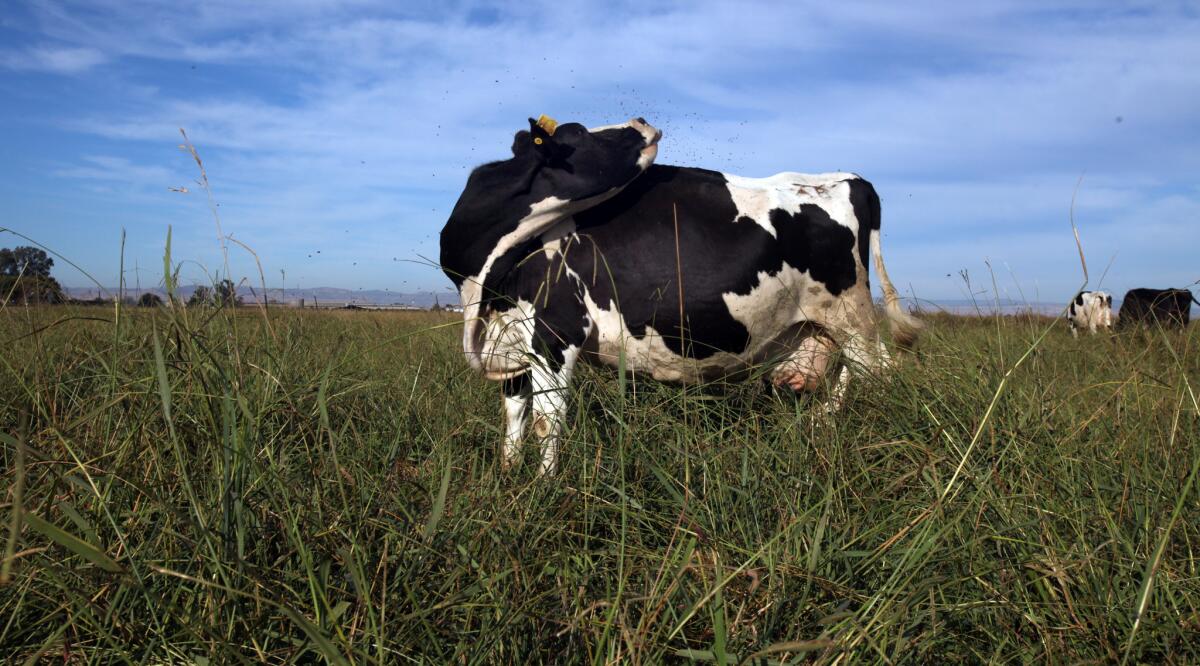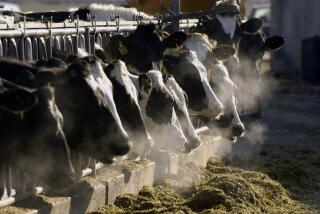Milk studies compound debate over what type to drink

Raw, pasteurized, organic, whole, skim. Choosing what sort of milk to drink grows ever more complicated, with several recent studies to add to the debate.
The American Academy of Pediatrics advised that pregnant women and children not drink raw milk because of the danger of bacterial illnesses, including salmonella, E. coli and listeriosis — food-borne diseases that can be fatal.
The academy this week also endorsed “a ban on the sale of raw or unpasteurized milk and milk products throughout the United States, including the sale of certain raw milk cheeses, such as fresh cheese, soft cheeses and soft-ripened cheeses.”
California is among 30 states that allow the sale of raw milk and one of the few that allows the sale in supermarkets. When raw milk production is properly regulated, advocates say, it is safe, delicious and provides health benefits, including protections against asthma and lactose intolerance.
Mark McAfee, whose raw milk dairy in Fresno, Organic Pastures, produces milk sold in 625 stores, said the academy’s position is confusing.
“This is not the raw milk we saw 50 to 75 to 100 years ago,” he said.
A Minnesota study published last week concluded that more people were getting sick from raw milk than had been recognized. And scientists in yet another study reported that organic whole milk offered more of the fatty acids good for the heart than conventional milk. None of it is likely to be the last word on a beverage that many Americans consume every day and rely on to provide nutrition for their children.
Maureen Bligh, a registered dietitian nutritionist, said some of the controversy may have grown out of the perception that it’s better to avoid processed food.
“We want to eat minimally processed foods,” she said, adding that canned pinto beans, for example, are processed but very healthful. As for milk? She said milk is “highly nutritious,” and its benefits are not diminished by pasteurization.
Minnesota health officials estimated that more than 17% of the state’s residents who drank raw milk got sick, based on 10 years of health information.
Raw milk — from cows, goats and sheep — long has been identified as a source of food-borne illness outbreaks, causing symptoms such as diarrhea, stomach cramps and fever. It is also responsible for uncounted sporadic illnesses, the Minnesota officials said.
Pasteurization, introduced in the U.S. in the 1920s, kills bacteria by heating the milk.
The academy’s statement contends that the benefits of raw milk “have not been clearly demonstrated in evidence-based studies” and do not outweigh the risks. The pediatric group’s stand supports the position of other government health officials.
“They instituted pasteurization for a reason — to ensure safety for the entire population, and it’s especially important for children and anyone else who is vulnerable,” Bligh said in an interview.
The pediatricians estimate that 1% to 3% of dairy products consumed in this country are not pasteurized. From 1998 to 2009, that resulted in 1,837 illnesses, two leading to death. The popularity of raw milk products, including soft cheeses, has been on the rise.
“We have no scientific evidence that consuming raw milk provides any advantages over pasteurized milk and milk products,” said a statement from Dr. Yvonne Maldonado, lead author of the policy statement, a professor of pediatrics at the Stanford School of Medicine and an infectious disease expert. “But relative to the amount of raw-milk products on the market, we do see a disproportionately large number of disease and illnesses from raw milk.”
The U.S. Food and Drug Administration prohibits the interstate shipment of raw milk for human consumption, though it allows transport of some clearly labeled raw cheeses.
McAfee does not dispute that some raw milk is risky. And that, he said, is why all states need regulations to improve its safety. In Minnesota, for example, raw milk is illegal, so there are no regulations, while in California, he said, there have been very few illnesses. He said he’s not surprised there are infections in places where raw milk is unregulated because “it’s a black market, a free-for-all.”
McAfee also sees business motivations. He said milk processors oppose the sale of raw milk because they are in the business of processing it.
ALSO:
Wearable gadgets pump up workouts
Spa treatments that go beyond pampering
Hypnosis: You are getting sleepy ... and calm, and thin, and ...







